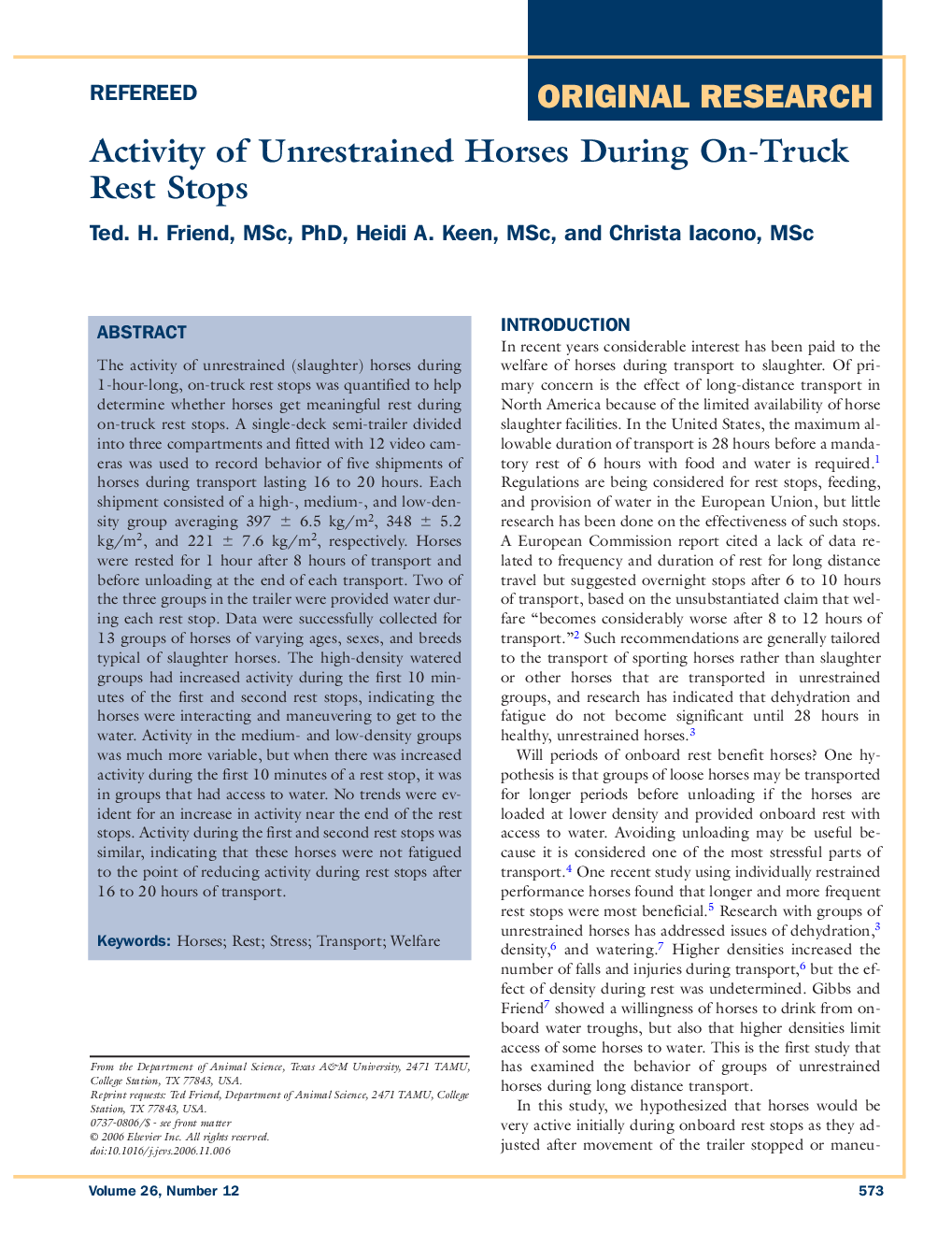| Article ID | Journal | Published Year | Pages | File Type |
|---|---|---|---|---|
| 2396735 | Journal of Equine Veterinary Science | 2006 | 5 Pages |
The activity of unrestrained (slaughter) horses during 1-hour-long, on-truck rest stops was quantified to help determine whether horses get meaningful rest during on-truck rest stops. A single-deck semi-trailer divided into three compartments and fitted with 12 video cameras was used to record behavior of five shipments of horses during transport lasting 16 to 20 hours. Each shipment consisted of a high-, medium-, and low-density group averaging 397 ± 6.5 kg/m2, 348 ± 5.2 kg/m2, and 221 ± 7.6 kg/m2, respectively. Horses were rested for 1 hour after 8 hours of transport and before unloading at the end of each transport. Two of the three groups in the trailer were provided water during each rest stop. Data were successfully collected for 13 groups of horses of varying ages, sexes, and breeds typical of slaughter horses. The high-density watered groups had increased activity during the first 10 minutes of the first and second rest stops, indicating the horses were interacting and maneuvering to get to the water. Activity in the medium- and low-density groups was much more variable, but when there was increased activity during the first 10 minutes of a rest stop, it was in groups that had access to water. No trends were evident for an increase in activity near the end of the rest stops. Activity during the first and second rest stops was similar, indicating that these horses were not fatigued to the point of reducing activity during rest stops after 16 to 20 hours of transport.
